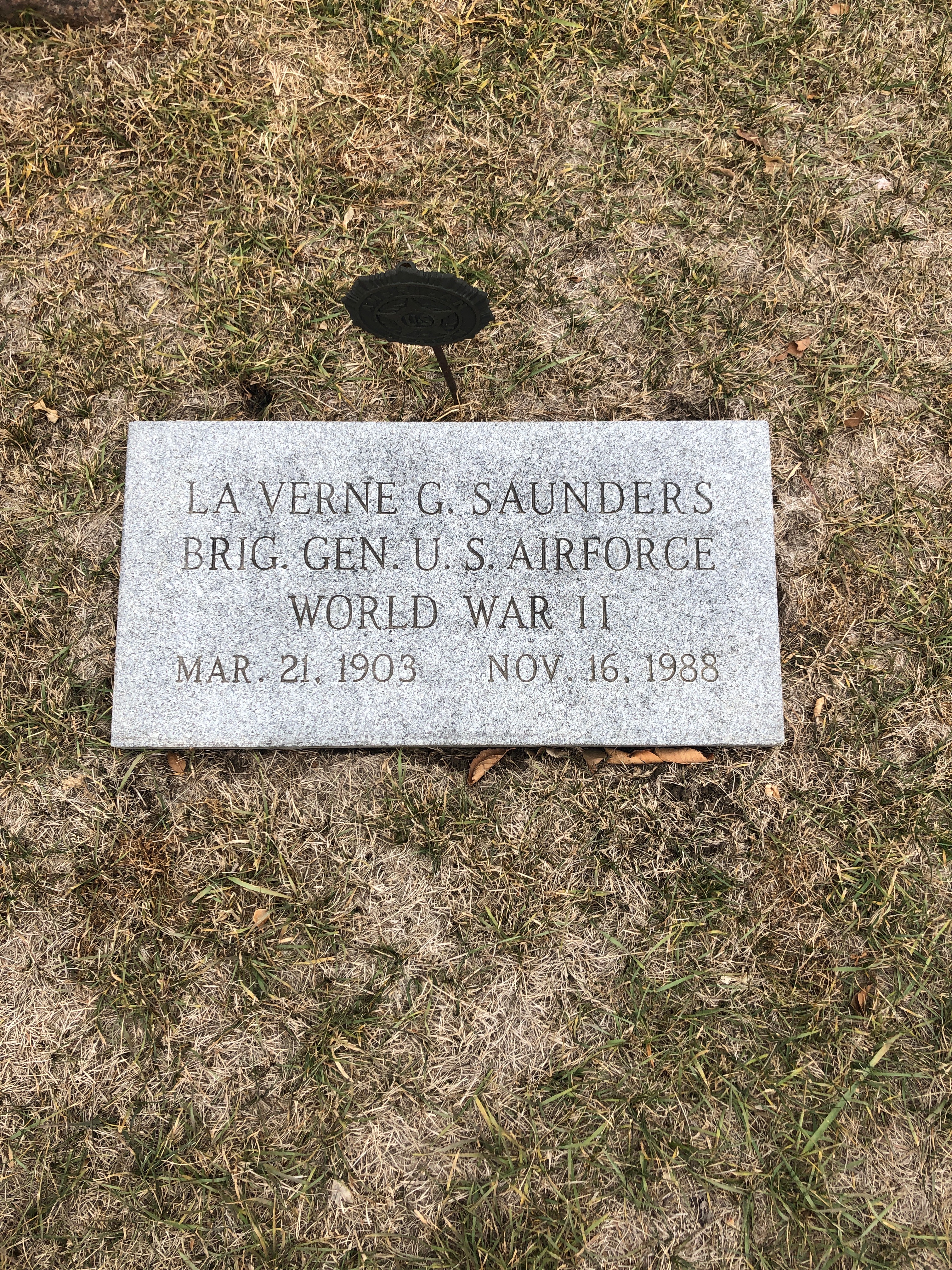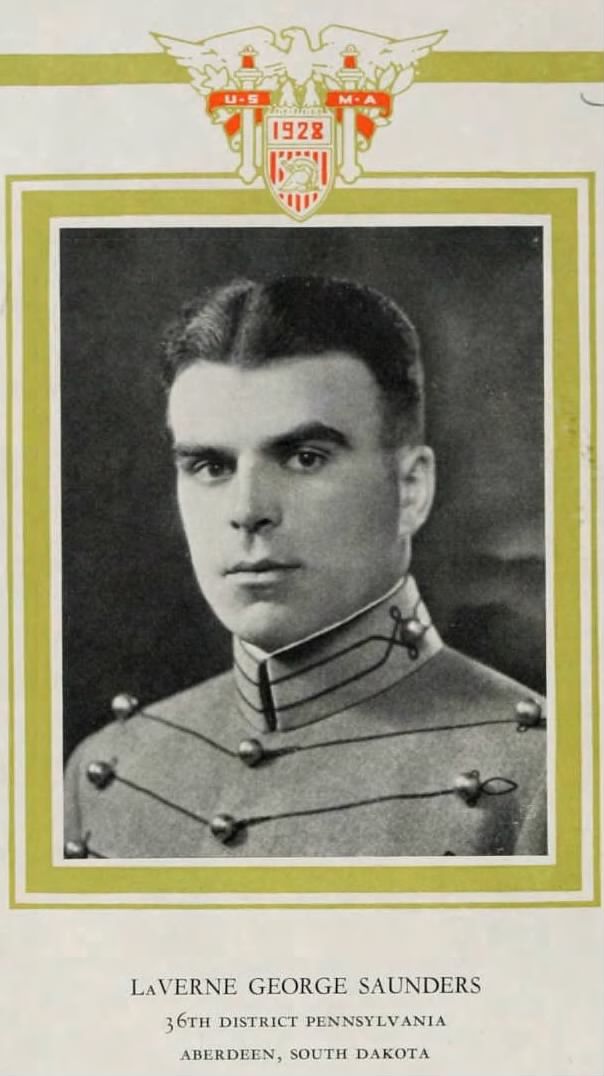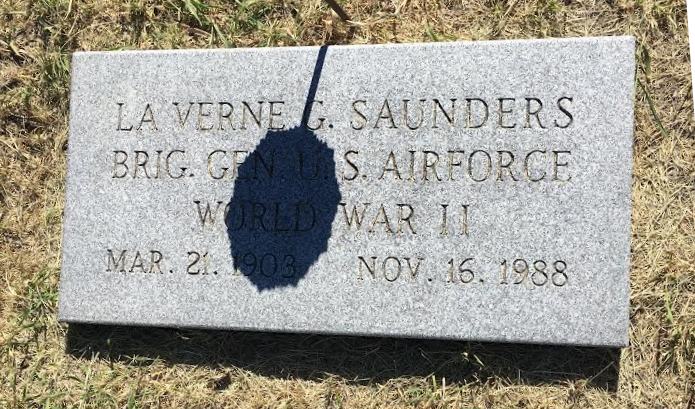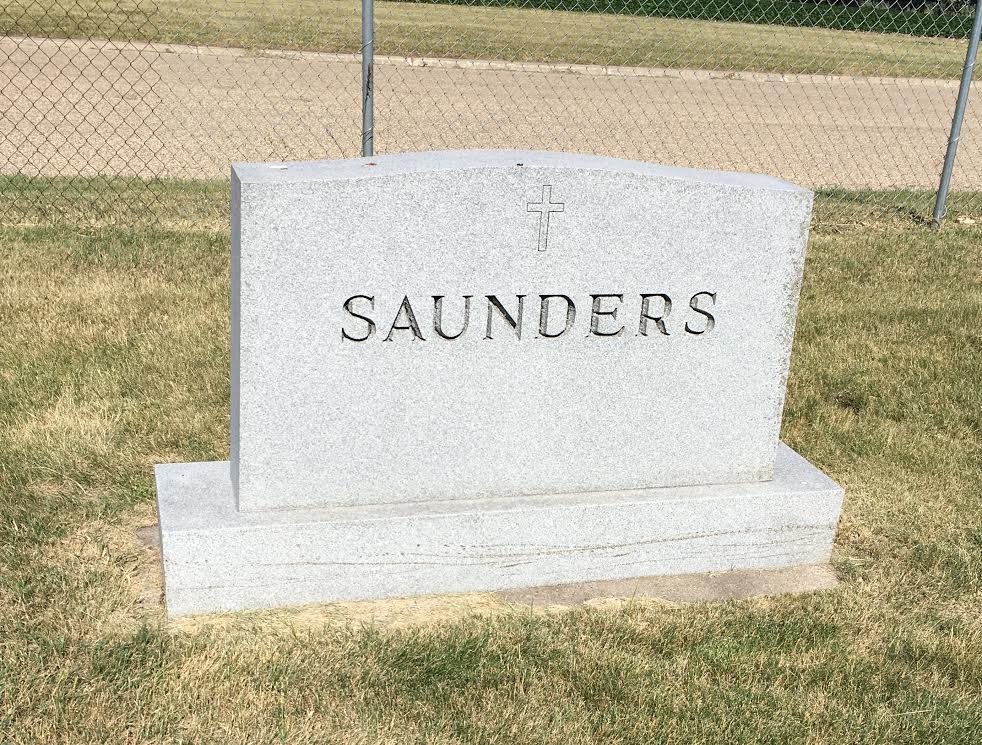At Hickam Field on Dec. 7, 1941, Saunders, then a major commanding the 12th Bombardment Group, was one of the few to get a bomber into the air after the devastating surprise attack, but was too late to find and strike the Japanese fleet.
Beginning in August 1942, Saunders' B-17 group was operating out of Espiritu Santo in the New Hebrides, South of the Japanese-held Guadalcanal and the other occupied islands in the Solomons. At times they used Henderson Field at Guadalcanal for their attacks on Japanese shipping, aircraft and shore installations.
Doubling as base commander and combat commander, Saunders led his group in destroying 60 enemy planes during this period, damaging 33 others, and seriously crippling an aircraft carrier and other vessels. But the Japanese struck back with aircraft attacks and shelling of bases -- and the battle continued in the air.
When his group was attacked head-on by a swarm of Zeros as they made a second run on a Japanese target, the pilot of Saunders' B-17 was killed and the copilot seriously wounded. Saunders took the controls, landed the damaged plane near an island and helped the crew escape, inflate two boats and get ashore.
By March 1943, when Army Air Forces Chief Gen. H.H. (Hap) Arnold ordered Saunders to Washington to become a deputy chief of Air Staff, the 40-year old had earned the Navy's highest decoration (the Navy Cross), the Distinguished. Service Medal, the Distinguished Flying Cross, the Silver Star and the Purple Heart with cluster. He had been air adviser to Admiral William F. Halsey during the Solomons operations. He had been commanding general of the VII Bomber Command and chief of staff of Seventh Air Force. He had been promoted to brigadier general Dec. 25, 1942.
But General Saunders had more combat duty ahead of him. In July 1943 he began organizing and training the first B-29 wing -- the 58th Bomb Wing (Very Heavy), being assembled under the overall leadership of engineering and development expert Brigadier General Kenneth B. Wolfe. The XX Bomber Command was activated at Salina, Kan., in December with Wolfe in command. The combat groups were under operational control of Saunders' 58th Bomb Wing.
The task of developing the B-29, training its crews and basing it in India and China for employment against Japan was complex and enormous. The XB-29 first flew in September 1942; the first B-29 of 58th Bomb Wing landed in India in April 1944; and 68 B-29s under General Saunders flew against the iron and steel works at Yawata, Japan on June 15, 1944.
In a report in 1945, General Arnold disclosed a few of the difficulties. He wrote: "Time was another hurdle. It meant producing the biggest bomber in the least time with a minimum of second-guessing and redesign. Much of the credit for the solutions of these two problems rests with Major General K.B. Wolfe and Brigadier General LaVerne Saunders and their staffs. One of the most interesting aviation engineering feats of recent years is the story of the development of the power plants used on the B-29. More than 2,000 major and minor engineering changes have been made to date in getting this engine to a point of practical combat perfection."
The B-29 bombing campaign from the Asian mainland against Japan was the forerunner of operations launched from Pacific island bases. In July Saunders replaced Wolfe as commanding general of XX Bomber Command. In August Saunders was replaced by Major General Curtis E. LeMay. The command gained much experience that it passed on to other B-29 units preparing for combat. It moved to the Marianas in 1945 to take part in the final assault on Japan.
General LeMay recalls how in India in 1944, "my old classmate (in Air Corps Advanced Flying School) Blondie Saunders was holding down the fort temporarily. Blondie was due to go back to the states and get a new wing of 29s and fetch them out to Asia. He stayed around for a fortnight or so, to help me get my feet on the ground."
On an administrative flight shortly before returning to the United States, in September 1944, Blondie's B-25 crashed. LeMay helped move an engine off Saunders' crushed ankle. He spent the next 2 1/2 years in the hospital and was retired in 1947.
Born in Stratford, S.D., in 1903, Saunders graduated from the University of South Dakota in 1924 and the U.S. Military Academy in 1928. It was there that his coal-black hair inspired his nickname. An All-America tackle at West Point, Blondie Saunders was the football coach there from 1931 through 1939.
Contributor: Joel Kenneth (Ken) Trammell (48070431) • [email protected]
At Hickam Field on Dec. 7, 1941, Saunders, then a major commanding the 12th Bombardment Group, was one of the few to get a bomber into the air after the devastating surprise attack, but was too late to find and strike the Japanese fleet.
Beginning in August 1942, Saunders' B-17 group was operating out of Espiritu Santo in the New Hebrides, South of the Japanese-held Guadalcanal and the other occupied islands in the Solomons. At times they used Henderson Field at Guadalcanal for their attacks on Japanese shipping, aircraft and shore installations.
Doubling as base commander and combat commander, Saunders led his group in destroying 60 enemy planes during this period, damaging 33 others, and seriously crippling an aircraft carrier and other vessels. But the Japanese struck back with aircraft attacks and shelling of bases -- and the battle continued in the air.
When his group was attacked head-on by a swarm of Zeros as they made a second run on a Japanese target, the pilot of Saunders' B-17 was killed and the copilot seriously wounded. Saunders took the controls, landed the damaged plane near an island and helped the crew escape, inflate two boats and get ashore.
By March 1943, when Army Air Forces Chief Gen. H.H. (Hap) Arnold ordered Saunders to Washington to become a deputy chief of Air Staff, the 40-year old had earned the Navy's highest decoration (the Navy Cross), the Distinguished. Service Medal, the Distinguished Flying Cross, the Silver Star and the Purple Heart with cluster. He had been air adviser to Admiral William F. Halsey during the Solomons operations. He had been commanding general of the VII Bomber Command and chief of staff of Seventh Air Force. He had been promoted to brigadier general Dec. 25, 1942.
But General Saunders had more combat duty ahead of him. In July 1943 he began organizing and training the first B-29 wing -- the 58th Bomb Wing (Very Heavy), being assembled under the overall leadership of engineering and development expert Brigadier General Kenneth B. Wolfe. The XX Bomber Command was activated at Salina, Kan., in December with Wolfe in command. The combat groups were under operational control of Saunders' 58th Bomb Wing.
The task of developing the B-29, training its crews and basing it in India and China for employment against Japan was complex and enormous. The XB-29 first flew in September 1942; the first B-29 of 58th Bomb Wing landed in India in April 1944; and 68 B-29s under General Saunders flew against the iron and steel works at Yawata, Japan on June 15, 1944.
In a report in 1945, General Arnold disclosed a few of the difficulties. He wrote: "Time was another hurdle. It meant producing the biggest bomber in the least time with a minimum of second-guessing and redesign. Much of the credit for the solutions of these two problems rests with Major General K.B. Wolfe and Brigadier General LaVerne Saunders and their staffs. One of the most interesting aviation engineering feats of recent years is the story of the development of the power plants used on the B-29. More than 2,000 major and minor engineering changes have been made to date in getting this engine to a point of practical combat perfection."
The B-29 bombing campaign from the Asian mainland against Japan was the forerunner of operations launched from Pacific island bases. In July Saunders replaced Wolfe as commanding general of XX Bomber Command. In August Saunders was replaced by Major General Curtis E. LeMay. The command gained much experience that it passed on to other B-29 units preparing for combat. It moved to the Marianas in 1945 to take part in the final assault on Japan.
General LeMay recalls how in India in 1944, "my old classmate (in Air Corps Advanced Flying School) Blondie Saunders was holding down the fort temporarily. Blondie was due to go back to the states and get a new wing of 29s and fetch them out to Asia. He stayed around for a fortnight or so, to help me get my feet on the ground."
On an administrative flight shortly before returning to the United States, in September 1944, Blondie's B-25 crashed. LeMay helped move an engine off Saunders' crushed ankle. He spent the next 2 1/2 years in the hospital and was retired in 1947.
Born in Stratford, S.D., in 1903, Saunders graduated from the University of South Dakota in 1924 and the U.S. Military Academy in 1928. It was there that his coal-black hair inspired his nickname. An All-America tackle at West Point, Blondie Saunders was the football coach there from 1931 through 1939.
Contributor: Joel Kenneth (Ken) Trammell (48070431) • [email protected]
Inscription
BRIG GEN US AIR FORCE
WORLD WAR II
Family Members
Other Records
Sponsored by Ancestry
Advertisement
Explore more
Sponsored by Ancestry
Advertisement













